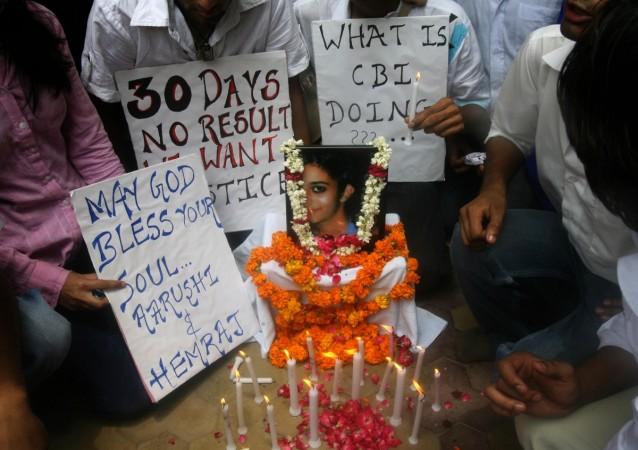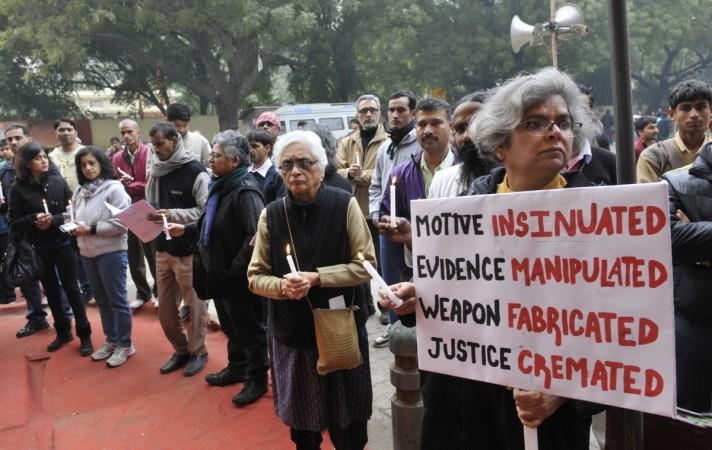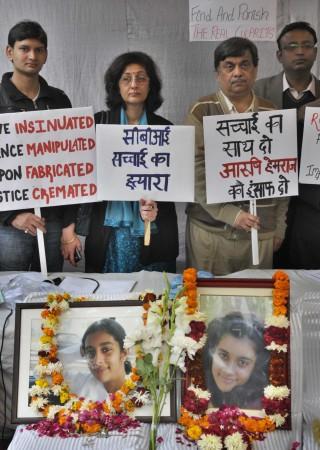
The Central Bureau of Investigation (CBI) would not have faced a more severe reprimand than this when on Thursday, October 12, the Allahabad High Court (HC) trashed its findings in the sensational twin murder of Arushi Talwar and Hemraj. The court not only rubbished the agency's findings but the incisive 273-page judgement, also slammed the CBI for cooking up evidence and planting witnesses.
A detailed reading of the judgement, which acquitted Arushi's parents- Rajesh Talwar and Nupur Talwar, unveils the chilling facts about how the investigation agency created theories at its convenience to "solve" the murder mystery. The HC also slammed the trial court judge who in November 2013 convicted the Talwars in the twin murder that dates back to May 2008.
The HC bench of Justices B K Narayana and A K Mishra observed that all the evidence and witnesses were planted by the CBI to cover up their failure in gathering any factual proof.
Detailed observations of Allahabad High Court
Allahabad HC held Shyam Lal, the CBI trial court sessions judge, responsible for arriving on a verdict based on mere guesses presented by the CBI.
"The judge has made a mockery of law by acting like a fanciful film director," Indian Express reported quoting the HC verdict.
"The judge took evidence and circumstances of the case for granted and tried to solve it like a mathematical puzzle… In all criminal trials, analogies must be drawn and confined within the domain and realm of evidence, facts and circumstances on record," the judgement read.
The HC also said that the trial court judge failed to understand the postmortem report clearly. The postmortem report submitted by Dr Sunil Kumar Dohre did not have any mention of any sexual assault or activity with Arushi.
Dohre in his conclusive statement to the trial court had said that the victim's vaginal cavity had a whitish discharge, and the vaginal canal was visible because the opening was so visible, indicating manipulation during rigor mortis- meaning, the vaginal canal was visible due to the rigor mortis (stiffening of muscles post few hours of death).

The CBI misinterpreted Dohre's report and presented a 'theory of sexual activity' before the trial court. The HC also noted that Dohre was a member of an expert committee of forensic science which reviewed the postmortem reports of Arushi and Hemraj, and the committee's findings were consistent with Dohre's original postmortem report.
Altered statements of 'witnesses'
Bharti Mandal, who was prosecution's witness, had earlier given a statement in the trial court stating, "I put my hand on the outer grill door, but it did not open." The CBI presented another 'created theory' to the trial court, that Mandal's statement defines a fact of the door being locked from inside, hence there was no one inside the house except the parents, Arushi and Hemraj.
Later, in a cross-examination Bharti turned hostile and said, "Whatever was taught/explained to me, the same statement I have stated."
Referring to this statement, the HC noted, "The aforesaid piece of testimony of Bharti Mandal clearly indicates that Bharti Mandal is a tutored witness and whatever incriminating facts were stated by her in the court for the first time were taught/explained to her."
Another revelation which surfaced was the statement of then staff officer of district magistrate- Sanjay Chauhan, who had mentioned that he visited Talwar's home on May 16, 2008.
Chauhan had also said that he saw police vans outside Talwar's home and that there was blood on the "floor and the railing". Although in the testimony given to the trial court, he said that 'he had not spoken to the police'.
Hence the HC bench in its observation said- "Chauhan was a planted witness as the CBI has not been able to come up with any cogent answer to the query of the defence as to how the CBI came to know about the visit of Sanjay Chauhan to L-32 Jalvayu Vihar (the crime spot)".
Mystery over 'members inside the house'
The defence counsel earlier in an argument in the trial court had clearly pointed out that a pillow cover with Hemraj's blood was found from Krishna's (Dr Rajesh Talwar's compounder) room. Krishna was arrested along with two other house helps- Rajkumar and Vijay Mandal.
Later Rajkumar and Vijay were released, based on which the defence had tried to prove that Krishna and Hemraj were together in the house on the night of the gory incident. Hence stating that there were people inside Talwar's residence.

Falsifying the initial findings, the CBI then provided documents which suggested that the pillow cover was found from Hemraj's room, and there had been a "typographical error" in the report of the Centre for DNA Fingerprinting and Diagnostics CDFD, Hyderabad.
The CDFD officer SPR Prasad told the trial court that the sealed packets of evidence it returned to the trial court after examination were found to had been opened. "...all his seals have been broken, all his envelopes have been torn open and he cannot say who broke these seals, who tore open the envelopes, when this was done and why this was done," the HC bench quipped.
Talwar's counsel
"We aimed to defeat the hypothesis that there were only four persons in the flat that night by establishing the presence of outsiders," said Rajarshi Gupta one of the counsels of Talwars.
"The CBI had begun tampering with evidence, including the blood-stained pillow covers found in Hemraj and Krishna's room, when they saw their initial case not holding up. Several such subjective and unsustainable testimonies were presented in the trial court," Gupta said.
Here's a link to the blog written by late Arushi's friend- Fiza Jha, which would give you more insights on the mysterious case.
Source: Indian Express

















